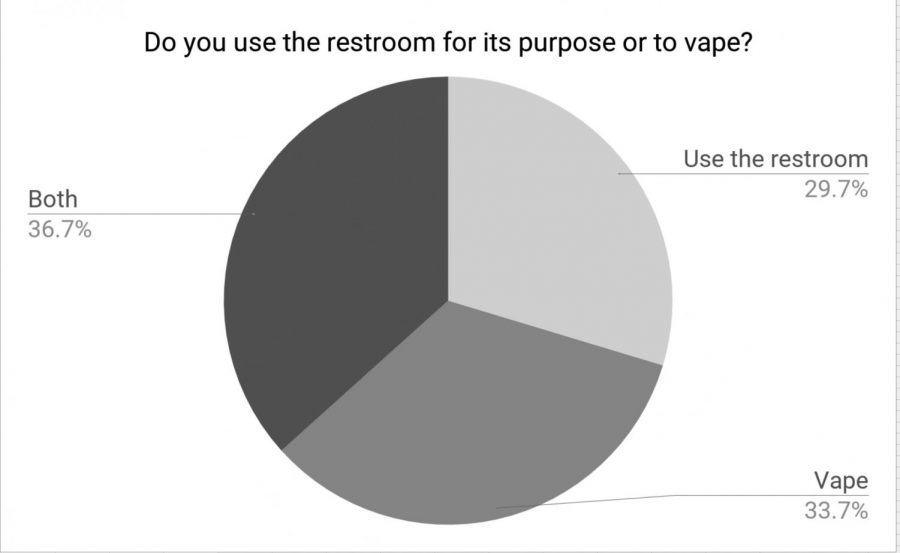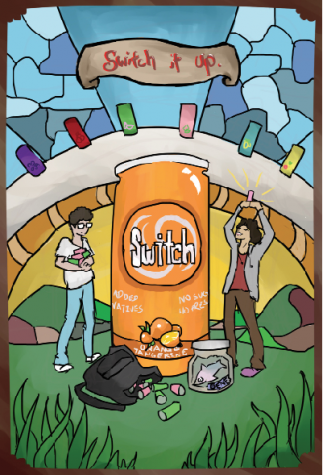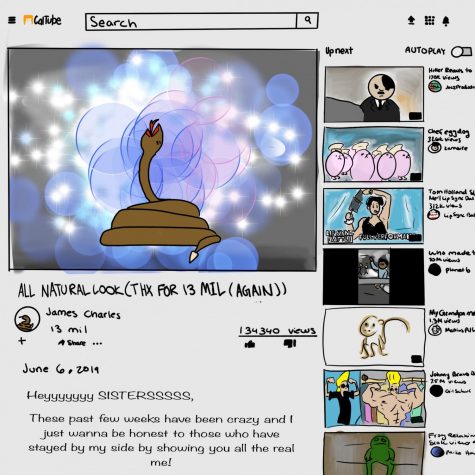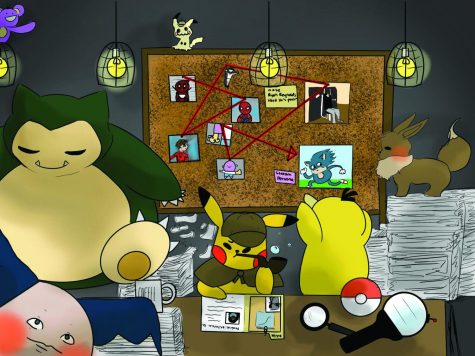Cal Nicotine use appears on the rise
Students wait eagerly for their teachers to turn their backs.
That’s their cue to reach quietly for a small, sleek device they can easily conceal in their palms.
It resembles a flash drive, but instead of computer files, this device stores nicotine.
Vaping, the cigarette for a new generation, appears to be on the rise among students at Cal High and is becoming ferociously popular nationwide.
“It’s a waste of frickin time,” said campus supervisor Tim Ford. “It does absolutely nothing for you.”
Vaping using e-cigarettes, which are also known as the Juul and Suorin, are handheld electronic devices that deliver vaporized nicotine from disposable pods containing a five percent nicotine solution.
The devices are known for their small and sleek look, enough to be easily mistaken for a USB. They deliver a powerful buzz in as little as five minutes, similar to the now outdated cigarette.
“I’ll admit, I think vape is a dumb-sounding word and generally looks about as cool as wearing a Bluetooth headset,” said senior Siddhant Shekhawat.
In the last two years, vaping and e-cigarettes have increased in popularity on campus, whereas before most people were strongly against nicotine in the form of cigarettes.
Its popularity among students indicates that as a result, people are not as concerned about the consequences of nicotine.
“From an administration standpoint, we are fully aware of the issues in the bathrooms and are actually working on quite a few things,” assistant principal Andy Briggs said. “But the problem is if we shut down all the bathrooms they’ll just go somewhere else and do it.”
The Californian surveyed 300 random students on campus, asking them if they use the restrooms to vape or for its intended use purpose.
When asked, 33.7 percent responded that they vaped in the restroom, while 29.7 percent indicated they used the bathroom for its intended purpose. Nearly 37 percent admitted they do both in the restrooms.
That means that campus restrooms are being used by two in three students to vape.
“Every day I walk up to the second floor bathroom, I pull my Juul out of my back pocket and I start blowing,” said an anonymous senior boy. “I don’t have an addiction. You can’t be addicted to vape. I’m fine.”
When compared to cigarettes, one of the main advantages of vaping is the absence of other harmful toxins that are in a traditional cigarettes. E-cigarettes do not contain tobacco or other additives. This is the main difference between a traditional cigarette and an up to date e-cigarette.
Despite being created for frequent cigarette smokers rather than teenagers, vape devices have led to Cal students slowly getting addicted to the “headrush.” As a result, students may be becoming addicted to nicotine.
Even students who don’t have a device, ask others for a hit to satisfy their need for the luxurious buzz.
“I have asthma and I tried one cigarette, then had breathing problems for three days,” said an anonymous freshman boy. “Now I’ve been vaping everyday for four months and now have zero health problems [from the vape.]”
In each pod, there is approximately 59 mg/mL of nicotine, which is the equivalent to a pack of cigarettes per pod, according to Buzzfeed News.
According to a study by the University of Chicago, e-cigarettes normalize smoking, an act that has become less socially acceptable over the past 20 years.
The growing popularity of vaping has gotten so intense, that Cal students will take“nicotine breaks” in the bathroom during class or at lunch.
Students can use these devices easily in restrooms or even the middle of class by blowing into their backpack or shirt.
“Kids vaping in the restrooms doesn’t bother me,” said freshman Evan O’Connell. “What bothers me is them not letting me take a hit.”
Not to mention, vaping has created a new problem in classes across campus where students are able to discreetly use the device and further feed their addiction without teachers ever noticing.
“I like to think kids don’t vape in my class, but I find myself often creating my own reality,” said English teacher Anatoly Alexeeff.
Another matter to consider is that the vaping lifestyle is not the cheapest.
One can buy a Juul online for $50 or at a smoke shop for $65, but that is just the device itself.
Each pack of pods which contains four individual pods, costs around $30 dollars depending on students’ choice of flavors, which range from mango, mint, tobacco, and fruit medley to creme brulée and cool cucumber.
“Since [smoke shops] know we are underage they make the pods super expensive, but we still buy them anyways,” said Crystal Wang.
Buying online is also an option with unconvincing regulation on buying devices.
Online, it appears that all students have to do is check a box that says they are 21+ years old and wait 5-7 business days and they’ll be “blowing fat clouds” in no time.
Vaping is now an aspect of social life for many teens, creating a common interest and a way to share and socialize.
A study by the New England Journal of Medicine revealed nicotine use could lead to leniency toward cocaine or other addictive drugs later on.
“There is progress in students being caught,” said Briggs. “For students who are caught vaping nicotine, first offense, they are given the option of going to a Saturday vape education class and by attending it reduces the suspension.”
Some might say that vaping in the bathroom, or even in class, is soon to become a norm at Cal to relieve high stress levels in students’ lives.
Still, it’s undeniable that vaping on campus has become a popular aspect of Cal’s student culture and life.










Alex Suehiro • Mar 14, 2023 at 1:22 am
I wrote this article back in 2018 and love that it’s still here! Hope The Californian is doin well?